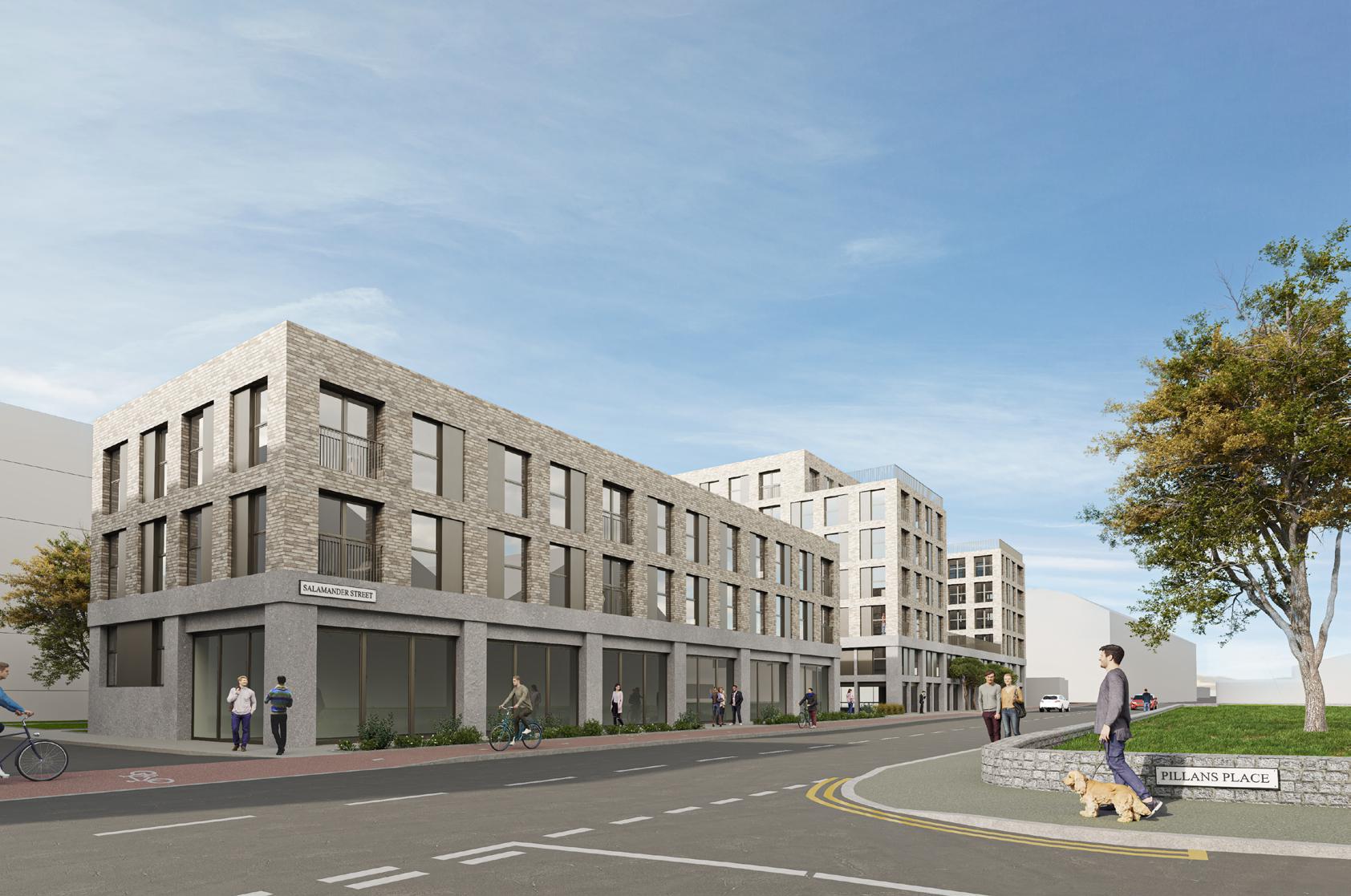How Co-Living Could Get a Foothold in Scotland
14 December 2023
Co-living accommodation is in demand in the UK, particularly in London and the South East, where the likes of Folk and Kosy Living are building up significant portfolios.
Occupational demand for completed schemes has been very strong, as evidenced by Folk’s scheme at Battersea which reached full occupancy within three months. The British Property Federation recently published analysis which identified co-living as having a vital role to play to tackling the soaring level of demand for rented accommodation, especially across the UK’s core cities.
A typical co-living scheme will be in a high-density urban area and will comprise studio-style living space of between 20 sq m and 30 sq m, with generous shared amenities for dining, coworking, fitness and socialising.
Occupiers choosing co-living will typically be single, come from all walks of life and use public transport to get around. Affordability will be a key consideration, and they will choose to rent for the convenience of doing so.
However, Scotland has yet to have its first 100% co-living scheme constructed. In Aberdeen, Dandara’s The Point development closely resembles a co-living scheme. Originally consented as PBSA, Dandara was subsequently granted a planning relaxation by Aberdeen City Council to allow lettings on an unrestricted basis. The building of 342 fully furnished bedrooms, made up of studio and cluster rooms, reached full occupancy within 24 months.
Elsewhere in Scotland, Glasgow and Edinburgh have the right demographics and economies to make co-living an appealing residential sub-sector. High levels of graduate retention, constrained supply of residential letting accommodation and a high proportion of financial and tech sector employers all point towards strong demand for co-living space.
Although there have been some schemes considered, up until now, a lack of specific planning guidance or policy at a national or local level has been off-putting to developers. Glasgow had seen a small number of co-living planning applications, with Watkin Jones the highest-profile example – it originally sought consent for 406 co-living beds at Portcullis House. The scheme and other smaller proposals have stalled, in the main due to the lack of clear planning policy or guidance.
In response, Glasgow City Council has recently published its consultative draft Large Scale Co-Living Planning Guidance as part of the City Development Plan. Co-living is, initially, to be restricted to a defined area in and around the city centre. The draft guidance outlines its definition of a co-living scheme: specifying 50+ bedrooms; non-self-contained living spaces of 22 sq m to 31 sq m; non-family market-let housing with flexible tenancy; but including a restriction of tenancies not less than six months.
While this restriction is in place to stop use of the asset as holiday apartments or temporary hostel accommodation, it is not likely to find favour with developers and investors. The essence of co-living is flexible tenancy options and the industry is likely to push back on the six-month restriction. There will be the chance to do this during the period of public consultation over the coming months.
We believe that co-living can provide an essential part of the housing mix to meet housing need in Scotland’s core cities. To facilitate this, there needs to be clear planning guidance and policy at both a national and local level that provides developers and investors with the confidence to bring forward schemes.
As highlighted by the BPF report, policies must avoid being too prescriptive and allow market parameters to bring forward development. As with build-to-rent, government representatives need to educate themselves on co-living as an emerging housing type at an early stage, so that policy and guidance can reflect the specialist nature of the accommodation.
While there are only around 4,000 operational co-living beds in the UK’s urban centres, there is a significant development pipeline estimated to be in excess of 25,000 beds – and this is likely to grow further. Scotland has the chance to become part of this solution to the housing crisis, if Scottish government and local authorities listen to developers as well as investors, working collaboratively to bring forward well-considered planning policy.



